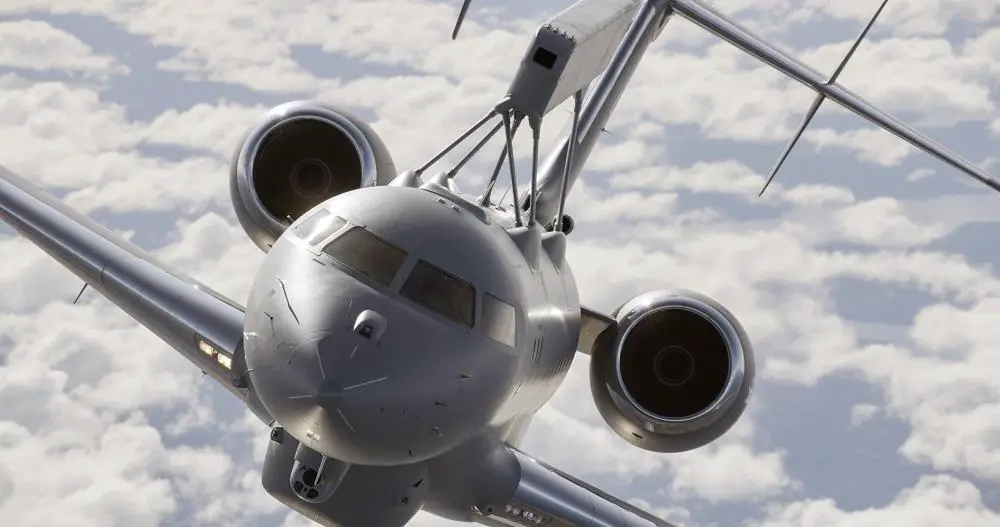The Polish Minister of Defence is engaged in negotiations with Sweden regarding the acquisition of Airborne Early Warning and Control (AEW&C) for the Polish Air Force. This way the Polish Air Force strengthen resilience of Poland but also of NATO’s eastern flank. An airborne early warning and control (AEW&C) system is an airborne radar system designed to detect aircraft, ships, vehicles, missiles, and other incoming projectiles at long ranges and perform command and control of the battlespace in an air engagement. Among the possible solutions is the acquisition of new AEW&C aircraft from Sweden, specifically the GlobalEye with the Erieye Extended Range radar. The Polish Minister of Defence emphasized that detailed negotiations are already underway in this matter.
The GlobalEye is a multi-role airborne early warning & control (AEW&C) platform from Swedish defence and security company Saab. The GlobalEye consists of a suite of sensors using Saab’s Erieye ER (Extended Range) radar and mission system, installed in the Bombardier Global 6000/6500 long-range business jet. The primary sensor of the GlobalEye is its Erieye ER airborne early warning (AEW) radar; weighing approximately 1 tonne, it is mounted atop the twinjet’s fuselage. Saab has cited up to 450 km (216 nm) range for the AEW radar system when flown at an operating altitude of 30,000 ft; and 550 km at 35,000 ft in comparison with earlier versions of the Erieye radar, Saab claims it has achieved a 70% increase in detection range, such as gallium nitride transmit/receive modules.

The GlobalEye is capable of detecting and tracking a combination of airborne and surface targets, the latter on both land and sea, while mission times of up to eleven hours in duration are possible. In addition to the AEW radar, the GlobalEye is equipped with various additional sensors. These include the Seaspray 7500E maritime surveillance radar, provided by Italian defence conglomerate Leonardo; the Seaspray radar features synthetic-aperture radar and ground-oriented moving target indication modes. The GlobalEye also has an electro-optical/infrared sensor, which is situated underneath the forward fuselage. Other mission equipment includes data links, voice and satellite communications and a command and control suite, the latter comprising five onboard operator stations.
The GlobalEye can be operated without any onboard operators, streaming its surveillance output to ground-based stations instead. GlobalEye can simultaneously perform airborne, maritime and ground surveillance duties. It has been offered with three layers of capability: the baseline AESA and C2 system for air, land and sea surveillance, along with some electronic intelligence functions; a version with additional infrared and sea-search functionality; and one with a dedicated signals intelligence (SIGINT) system. Currently United Arab Emirates Air Force operates 3 GlobalEye aircraft with an additional 2 on order scheduled for delivery in 2025. In April 2023, SAAB announced the maiden flight of the fourth GlobalEye. On 30 June 2022, SAAB and the Swedish Defence Materiel Administration (FMV) signed a contract for the acquisition of 2 GlobalEye aircraft, to be designated S 106 in Swedish service.
DPM @mblaszczak: I wish to say for the first time publicly that we are advanced in talks to obtain??early warning aircraft. We are conducting detailed negotiations. I hope they will succeed in short time. This way we strengthen resilience of??, but also of #NATO's eastern flank. pic.twitter.com/9MPIAg9glB
— Poland MOD ?? (@Poland_MOD) May 22, 2023















